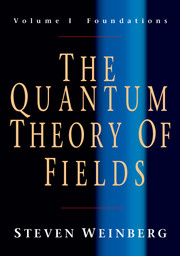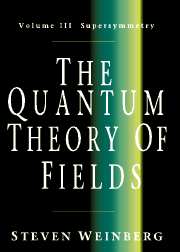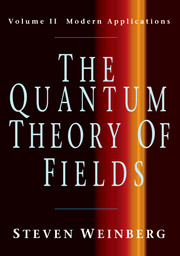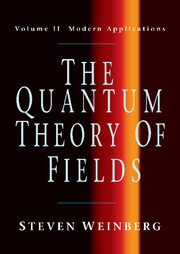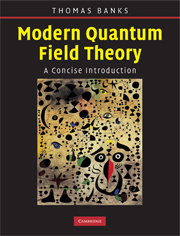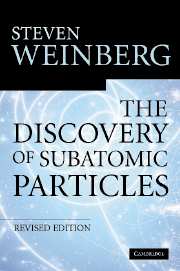The Quantum Theory of Fields
In The Quantum Theory of Fields, Nobel Laureate Steven Weinberg combines his exceptional physical insight with his gift for clear exposition to provide a self-contained, comprehensive, and up-to-date introduction to quantum field theory.
This is a two-volume work. Volume I introduces the foundations of quantum field theory. The development is fresh and logical throughout, with each step carefully motivated by what has gone before, and emphasizing the reasons why such a theory should describe nature. After a brief historical outline, the book begins anew with the principles about which we are most certain, relativity and quantum mechanics, and the properties of particles that follow from these principles. Quantum field theory emerges from this as a natural consequence.
The author presents the classic calculations of quantum electrodynamics in a thoroughly modern way, showing the use of path integrals and dimensional regularization. His account of renormalization theory reflects the changes in our view of quantum field theory since the advent of effective field theories.
The book's scope extends beyond quantum electrodynamics to elementary particle physics, and nuclear physics. It contains much original material, and is peppered with examples and insights drawn from the author's experience as a leader of elementary particle research. Problems are included at the end of each chapter.
This work will be an invaluable reference for all physicists and mathematicians who use quantum field theory, and it is also appropriate as a textbook for graduate students in this area.
- A fresh and logical approach to this core topic
- Written by a distinguished Nobel Prize winner
- Very well known and successful author, e.g. Gravitation and Cosmology (1972); The First Three Minutes (1977); Dreams of a Final Theory (1993)
- A valuable reference work for all who use quantum field theory, as well as a textbook appropriate to graduate courses
Reviews & endorsements
"The [physics] community will not be disappointed....Volume 1 is six hundred pages of meticulous exposition of the fundamentals of the subject....In addition to a superb treatment of all the conventional topics there are numerous sections covering areas that are not normally emphasized, such as the subject of field redefinitions, higher-rank tensor fields and an unusually clear and thorough treatment of infrared effects....This latest book reinforces [Weinberg's] high scholarly standards. It provides a unique exposition that will prove invaluable both to new research students as well as to experienced research workers....this will become a classic text on a subject of central importance to a wide area of theoretical physics." Michael B. Green, CERN Courier
"...for over 20 years there has been no good modern textbook on [quantum field theory]. For all that time, Steven Weinberg has been promising to write one. That he has finally done it...is cause for celebration among those who try to teach and try to learn the subject. Weinberg's book is for serious students of field theory....[I]t is the first textbook to treat quantum field theory the way it is used by physicists today." Howard Georgi, Science
"...provides an impressively lucid and thorough presentation of the subject from this modern viewpoint....Weinberg manages to present difficult topics with richness of meaning and marvellous clarity. Full of valuable insights, his treatise is sure to become a classic..." Nature
"...a self-contained, comprehensive introduction to quantum field theory." Book News, Inc.
"...beautifully produced and meticulously edited...and it is a real bargain in price. If you want to learn quantum field theory, or have already learned it and want to have a definitive reference at hand, purchase this book." O.W. Greenberg, Physics Today
"I would recommend it to students who have completed a first course in field theory and hope that many of my colleagues will read it as well. Weinberg leads us to a frontier rich in possibilities. This is an optimistic book, written with much respect for ideas and nature--and for tools." Chris Quigg, Science
Product details
May 2005Paperback
9780521670531
640 pages
253 × 175 × 30 mm
1.2kg
33 b/w illus. 2 tables 70 exercises
Available
Table of Contents
- Preface
- 1. Historical introduction
- 2. Relativistic quantum mechanics
- 3. Scattering theory
- 4. The cluster decomposition principle
- 5. Quantum fields and antiparticles
- 6. The Feynman rules
- 7. The canonical formalism
- 8. Massless particles: electrodynamics
- 9. Path integral methods
- 10. Nonperturbative methods
- 11. One-loop radiative corrections in quantum electrodynamics
- 12. General renormalization theory
- 13. Infrared effects
- 14. Bound states in external fields
- Subject index
- Author index.

